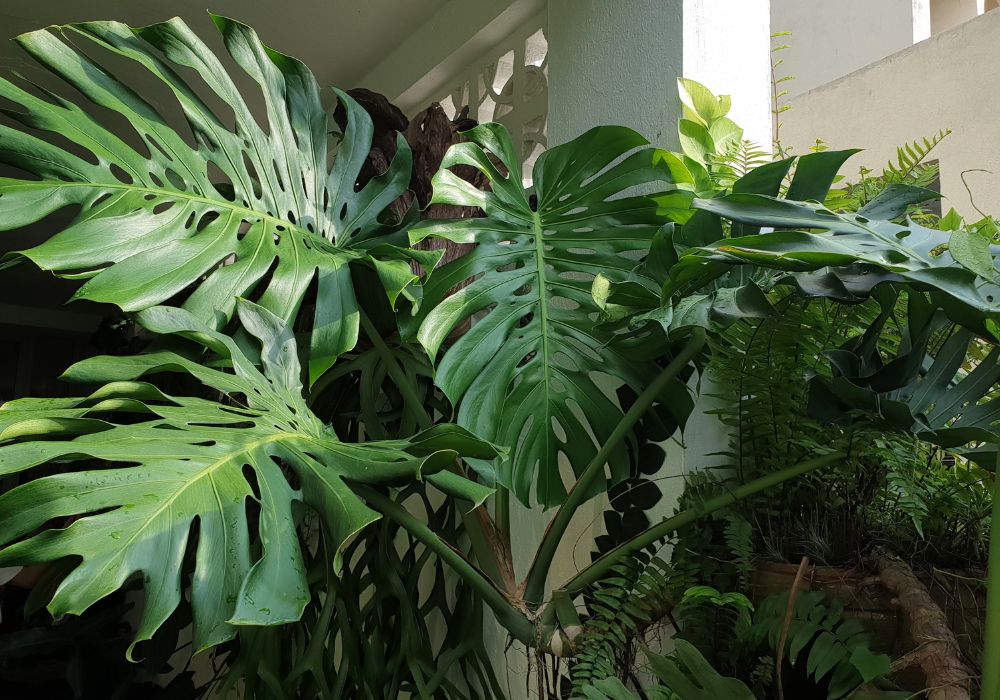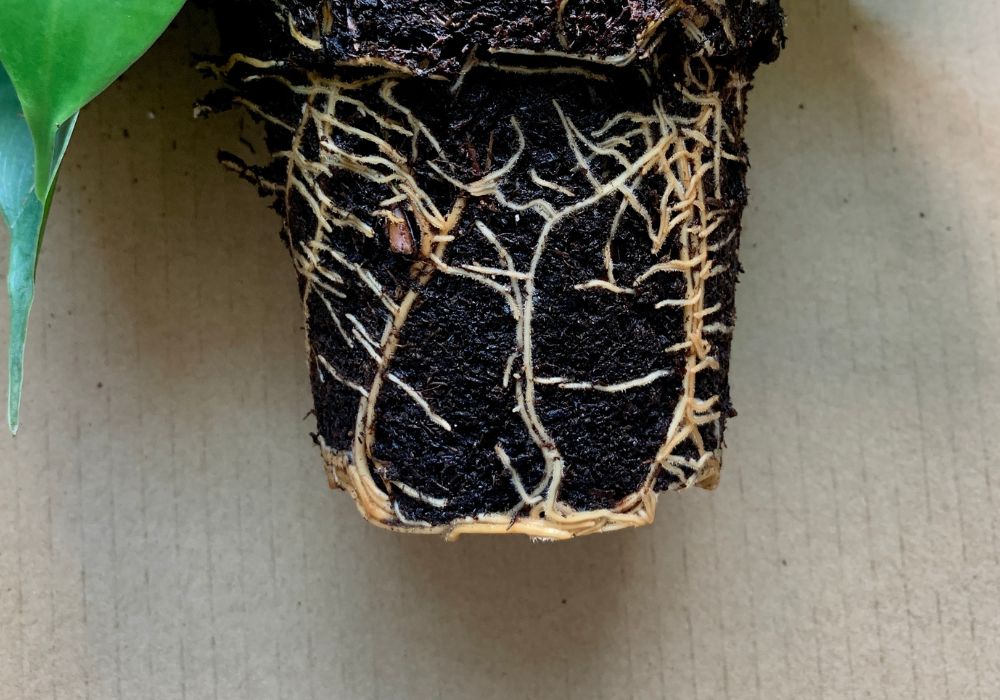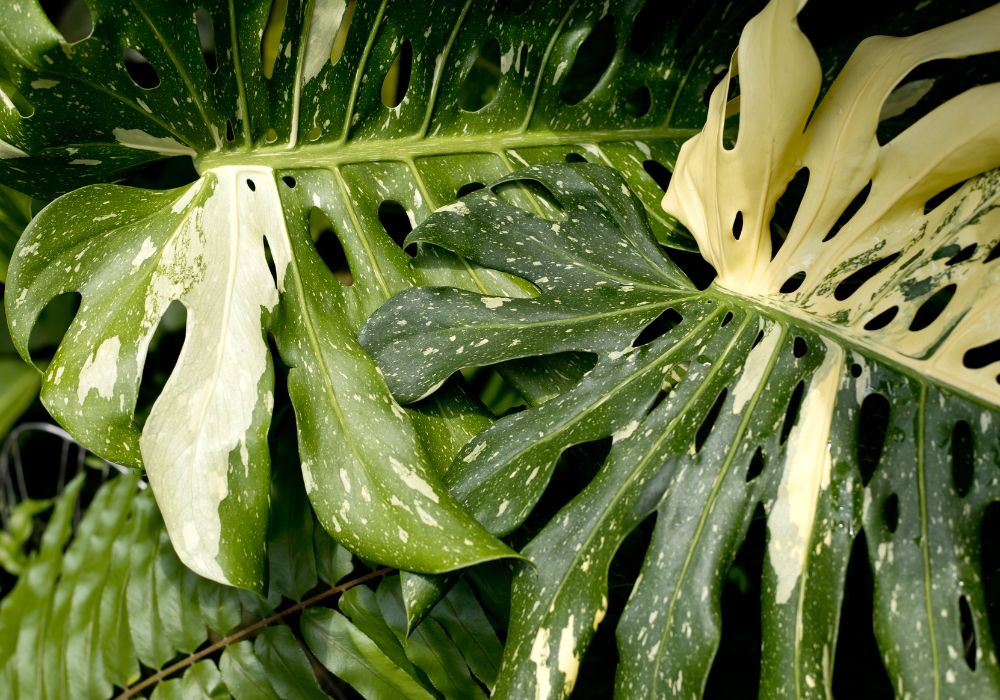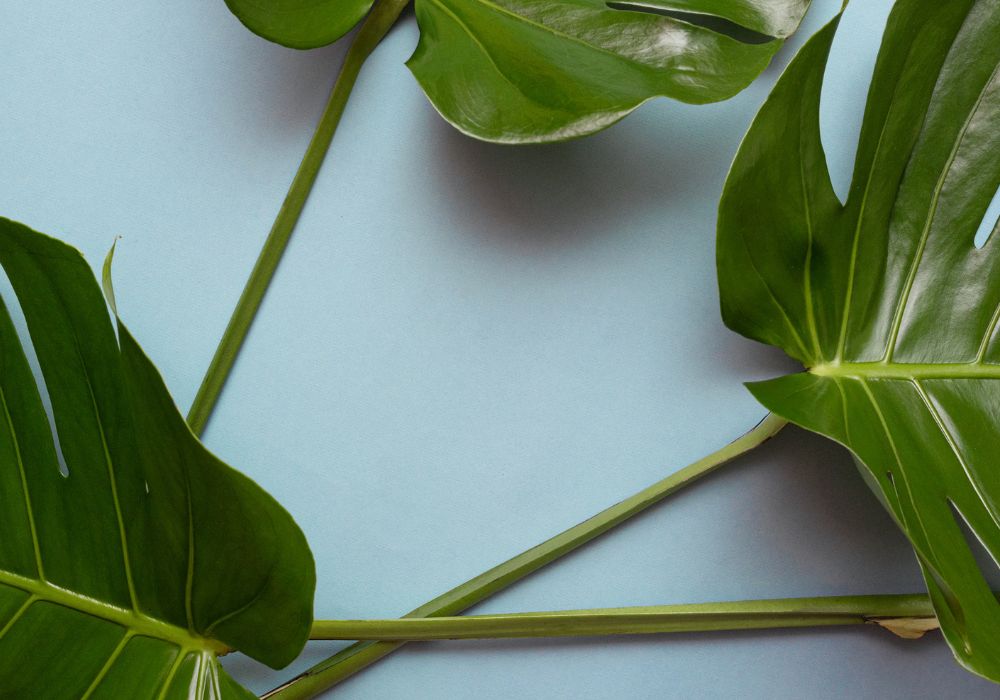If you’re looking to add a touch of elegance to your indoor space, the Calathea ornata, also known as the Pinstripe Plant, is a top contender. Its striking dark green leaves are adorned with pink pinstripe markings, making it a real showstopper.
Not only that, but the leaves are also known to move throughout the day, responding to the light by opening and closing – it’s like having a living, breathing work of art in your home!
Another standout feature of the Calathea ornata is its sensitivity to its environment, which might sound like a downside at first, but is actually pretty fascinating. The leaves of this plant tend to fold upwards at night, a behavior known as nyctinasty.
This not only helps protect the plant from cold temperatures but also makes for a fun daily observation as you witness your Pinstripe Plant’s nightly ritual. It’s like having a little botanic companion that follows its own schedule within your living space.
| Attribute | Information |
|---|---|
| Scientific Name | Calathea Ornata |
| Common Name | Pinstripe Calathea |
| Light | Indirect, filtered sunlight |
| Watering | Keep soil consistently moist, not soggy; prefers distilled water or rainwater |
| Temperature | 65°F to 75°F (18°C to 24°C) |
| Hardiness Zone | USDA Zones 10-11 |
| Humidity | High humidity (above 60%) |
| Soil Type | Well-draining, peat-based mix |
| Soil pH | Slightly acidic to neutral (6.0-7.5) |
| Fertilizing | Monthly during the growing season with a balanced liquid fertilizer diluted to half strength |
| Repotting | Every 1-2 years, preferably in spring |
| Pruning | Remove yellow or damaged leaves; no extensive pruning needed |
| Propagation | Division or stem cuttings |
| Mature Size | 2 to 3 feet in height |
| Bloom Time | Rarely blooms as a houseplant |
Light Requirement
When it comes to sunshine, this plant is like a sun-worshipper, soaking it up like there’s no tomorrow. Placing it in a spot that gets plenty of bright, indirect light will keep it content and thriving. Just think about how much you’d enjoy soaking up the rays on a warm summer day – that’s exactly what this little green buddy craves too!
Now, let’s be real – this plant isn’t a fan of the dark. So, make sure it’s placed somewhere with a good amount of natural light to keep it happy. If you notice it starting to look a bit droopy or sad, try moving it closer to that sunny window and watch it perk right back up in no time.
Watering Requirement
When it comes to watering your plant, it’s essential to strike the right balance. Overwatering can lead to root rot, while underwatering can cause wilting. To know when to water, stick your finger into the soil – if it feels dry about an inch below the surface, it’s time to water. Remember, consistency is key!
Adjust your watering routine based on the season. During warmer months, your plant might need more water to stay hydrated, while in the cooler months, you can reduce the frequency. Keep an eye out for any signs of stress in your plant, such as drooping leaves, as they could be a cue that your plant needs a good drink.
Temperature Requirement
In order to keep your plant happy and healthy, it’s important to pay attention to the temperature it’s exposed to. Most plants prefer a consistent temperature range to thrive. Extreme fluctuations can stress them out, leading to droopy leaves or stunted growth.
Plants that are native to tropical regions, such as ferns and orchids, generally enjoy warmer temperatures. On the other hand, succulents and cacti prefer drier, warmer conditions akin to their desert habitats. It’s like giving your plant a mini vacation to its natural homeland! Just remember to avoid placing your plant next to drafty windows or heaters—nobody likes an unexpected chilly breeze or a scorching heatwave, right?
Humidity Requirement
Alright, so let’s talk about the humidity this plant loves. This special plant thrives in high humidity levels, so think of giving it a little tropical feel in your home. You can make your plant happy by misting its leaves regularly with a spray bottle. Additionally, placing a tray of water near the plant or using a humidifier can also help create the right environment for it to flourish.
Now, don’t fret if you don’t live in a naturally humid area. You can create a makeshift humid space for your plant by grouping it together with other plants. This way, they can share and benefit from each other’s moisture. Remember, a happy plant equals a happy you, so keep that humidity up and watch your plant thrive!
Soil Requirement
Many of us don’t give much thought to the type of soil our plants are growing in. But for our green buddies to thrive, the soil they’re planted in plays a crucial role. It’s like picking the right outfit for a party – you want your plants to feel comfortable and look their best.
The key to happy and healthy plants is well-draining soil. Imagine wearing socks that never dry out – not a pleasant thought, right? Well, the same goes for your plants. They don’t want soggy feet! So, make sure the soil has good drainage to prevent waterlogged roots and keep your plant pals smiling.
Fertilizer Requirement
When it comes to fertilizing your plants, it’s important to choose the right kind of nourishment. Think about using a balanced liquid fertilizer that is diluted with water for easy application.
This can give your plant the nutrients it needs without overwhelming it. Remember to feed your plant every two weeks during the growing season to keep it healthy and thriving.
Additionally, consider using a slow-release fertilizer to provide a steady supply of nutrients over a longer period of time. This can be a convenient option for busy plant parents who may not have the time to fertilize their plants frequently.
Just ensure you follow the instructions on the fertilizer package to avoid overfeeding your plant, which can lead to nutrient burn and other issues.
Potting & Repotting
When it comes to potting your plant, make sure to choose a container that has drainage holes at the bottom. This will help prevent waterlogging and keep your plant’s roots healthy.
Also, use a well-draining potting mix to ensure proper aeration for the roots. Repotting is necessary when you notice the roots becoming overcrowded in the current pot.
Look for signs like roots growing out of the drainage holes or the plant becoming top-heavy. When repotting, gently loosen the roots before placing the plant in a slightly larger pot with fresh potting mix.
Remember not to go overboard with a much larger pot that can hold excess water, as it might harm the plant. Allow the plant some time to adjust to its new home before resuming regular care.
Pruning
When it comes to trimming your plants, having the right tools is key. You’ll want to use sharp, clean scissors or pruning shears to make precise cuts. Before you get snipping, take a moment to identify any dead, damaged, or overgrown branches that need to go. Trim them back to encourage new growth and keep your plant looking its best.
Remember, pruning isn’t just about aesthetics—it also helps improve the overall health of your plant. By removing diseased or crowded growth, you can promote better air circulation and prevent issues like mold or pest infestations. So, don’t be shy about giving your plant a little haircut when needed!
Propagation
If you want to make more plants without having to run to the store every time, trying propagation is a fun and cost-effective way to expand your collection. With just a few simple steps, you can create new plants from cuttings, seeds, or divisions. It’s like giving your green friends a chance to make baby green friends too!
When it comes to propagating your plants, each method has its own advantages and works best for different types of plants. Some plants root easily from cuttings, where you snip off a piece of the stem and let it grow roots in water or directly in soil.
On the other hand, seeds are a great way to start from scratch, but they may require a bit more patience and care.
And let’s not forget about divisions, which involve separating the plant into two or more sections to create new individual plants. So, get your hands dirty and start experimenting with propagation to see which method suits you and your plants best!
Also Check our Monstera Esqueleto care guide
Common Problems
One common issue that plant owners often encounter is overwatering. You see, when you love your plants a bit too much and pour on the water like you’re in a marathon, you might end up drowning them. No one likes soggy feet, including plants. So, be kind and give them a drink when their soil is dry to the touch.
Another pesky problem can be pests making themselves at home on your precious plant. Yep, those little critters can be quite the party crashers. Keep an eye out for spider mites or aphids, they just love to munch on your green friends. Show them the door with a gentle wipe of a damp cloth or some neem oil. Let’s keep the bug buffet off the menu for these plants, shall we?
Toxicity
It’s important to know that some plants can be harmful to humans and pets if ingested. For example, if your furry friends decide to take a nibble on certain plants, like this unique one we’re talking about, it could lead to stomach upset, vomiting, or other uncomfortable symptoms. Remember, it’s always better to be safe than sorry when it comes to plant toxicity.
When it comes to plants, toxicity can vary depending on the species. Some plants, even though they might look innocent and pretty, can pack a toxic punch.
This means it’s always advisable to keep an eye on your curious pets and young children around your green friends. Taking a little extra precaution can go a long way in ensuring a safe and enjoyable plant-filled environment for everyone.
For Humans
When it comes to the wellbeing of us humans, this plant can actually be quite beneficial. Not only does it add a touch of greenery to our living spaces, but it also helps purify the air by removing toxins like formaldehyde and benzene. So, if you’re looking to spruce up your home decor while also improving air quality, this plant is a win-win choice.
Having this plant around can also provide a sense of calm and relaxation, as its presence has been linked to reducing stress levels and promoting a feeling of tranquility. So, if you’re in need of a little pick-me-up after a long day, just spending some time near this plant might do the trick.
For Pets
Pets can add so much joy and companionship to our lives, but it’s essential to be cautious about the plants we introduce into our homes.
Some plants can be harmful if ingested by our furry friends, but luckily, there are safe options available. When considering plants for your home with pets in mind, always keep in mind their curious nature and tendency to nibble on greenery.
One plant that is safe for pets is the spider plant. These plants are not toxic to cats or dogs, making them a great option for pet-friendly households.
Spider plants are known for their air-purifying qualities and easy care requirements, making them a popular choice for those looking to add a touch of green to their homes without worrying about their pets’ safety.
Appearance
The plant’s leaves are a vibrant shade of green with intricate patterns of white stripes that resemble a zebra’s stripes. The leaves are broad and elongated, giving off a tropical vibe that can liven up any space. When the plant matures, it can grow up to three feet in height, adding a touch of lush greenery to your indoor jungle.
As the plant grows, it produces slender, upright stems that shoot up from the center, topped with clusters of small white flowers that bloom sporadically throughout the year.
The overall shape of the plant is compact and bushy, making it a great option for those looking to add some greenery without taking up too much space. Overall, the plant has a sleek and modern aesthetic that can complement a variety of interior design styles.
Read more about Monstera Subpinnata growing guide
Suggested Uses
Looking to add a touch of green to your space? This plant is perfect for brightening up any room in your home or office. It thrives in well-lit areas but can also tolerate some shade, making it versatile for various locations.
With its striking foliage and compact size, this plant is ideal for adding a pop of color to shelves, desks, or even as a centerpiece on your dining table. Its low maintenance requirements make it a great option for busy plant parents or those new to the world of indoor gardening. Give it a go and watch how this plant effortlessly enhances the aesthetics of your space!
What are the ideal growing conditions for Calathea Ornata?
Calathea Ornata, also known as the Pinstripe Plant, thrives in indirect, bright, and filtered light. It prefers well-draining soil with high humidity levels. Keep the soil consistently moist but not soggy, and maintain temperatures between 65°F to 75°F (18°C to 24°C). Avoid exposure to direct sunlight, as it can damage the delicate leaves.
How do I care for the unique foliage of Calathea Ornata?
To maintain the striking appearance of Calathea Ornata’s leaves, it’s crucial to keep the foliage clean. Wipe the leaves gently with a damp cloth to remove dust, but avoid using any leaf shine products. Additionally, provide a pebble tray or a humidifier to enhance humidity levels around the plant, preventing leaf browning and curling.
Is Calathea Ornata pet-friendly?
Calathea Ornata is non-toxic to cats and dogs, making it a pet-friendly houseplant. However, while the plant itself is safe, it’s essential to discourage pets from chewing on the leaves to prevent potential gastrointestinal issues. If your pet shows any signs of discomfort after contact with the plant, consult a veterinarian.
What should I do if my Calathea Ornata’s leaves are turning brown?
Browning leaves on Calathea Ornata are often a sign of improper care. Ensure the plant is not exposed to direct sunlight, and adjust watering to maintain consistent soil moisture. Trim any brown, damaged leaves with clean scissors, and consider increasing humidity around the plant by misting or using a humidifier.
How can I propagate Calathea Ornata successfully?
Calathea Ornata can be propagated through division during the growing season. Gently separate the plant into smaller sections, each with healthy roots and several stems. Plant these divisions in fresh potting mix, water them well, and provide the same care as for a mature plant. Propagation is best done when repotting, ensuring the new plants have optimal conditions for healthy growth.



